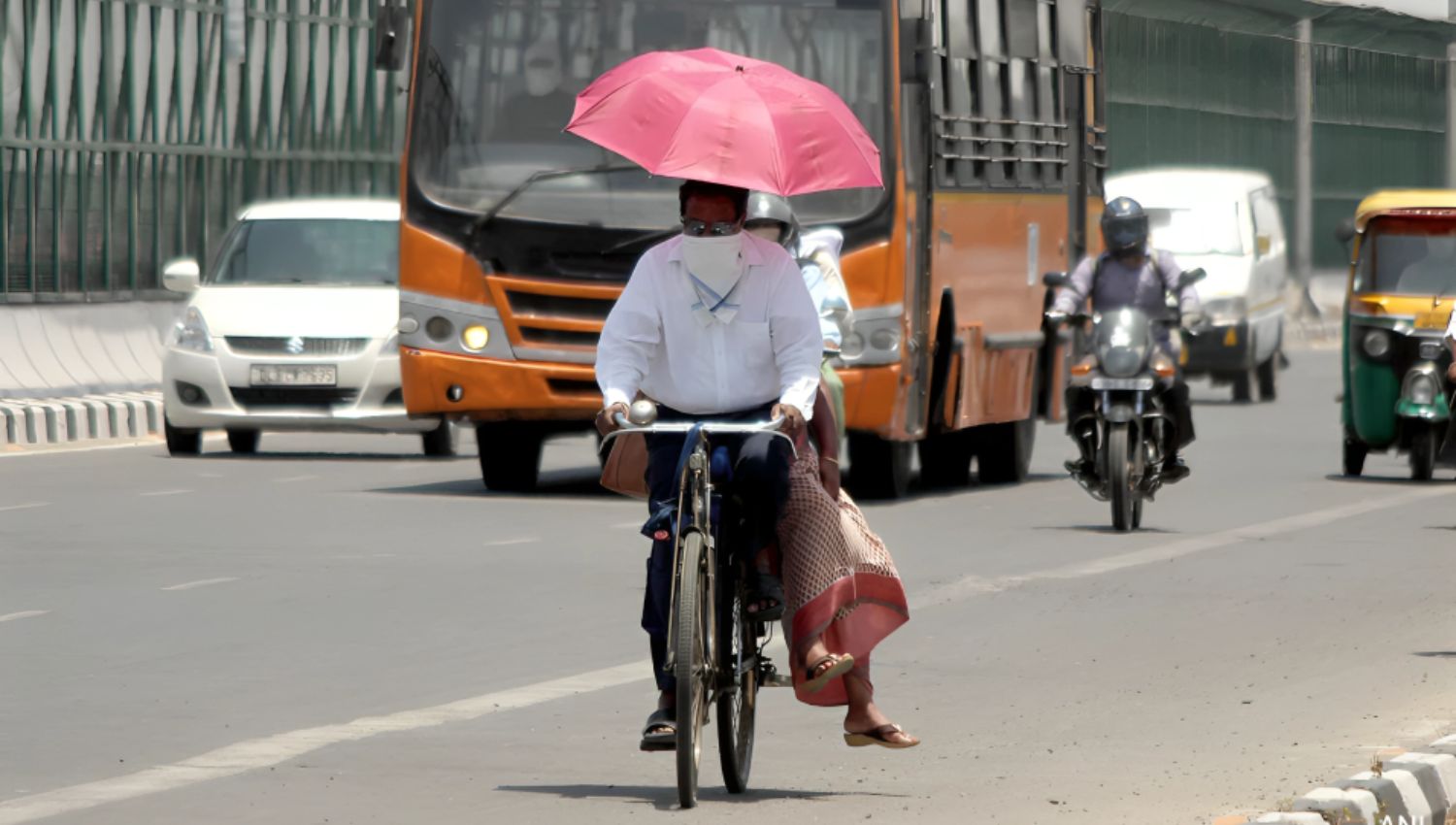New Delhi: Extensive areas of northern and central India experienced severe heatwave conditions on Tuesday, with temperatures exceeding 50 degrees Celsius in Rajasthan’s Churu and Haryana’s Sirsa, while settling nine degrees above normal in Delhi.
Three weather stations in Delhi recorded maximum temperatures of 49 degrees Celsius or higher. Mungeshpur and Narela in Delhi registered 49.9 degrees, followed by Najafgarh at 49.8 degrees Celsius, as per the India Meteorological Department (IMD).
This marked the highest maximum temperature recorded in the capital this season. However, Mungeshpur and Narela weather stations were established in 2022 and have data only for the past three years.
The IMD mentioned that relief from the heatwave conditions might be on the horizon after May 30.
A new western disturbance is anticipated over parts of northwest India on Thursday, potentially bringing isolated rainfall to the region over the weekend.
IMD Director General Mrutyunjay Mohapatra attributed the heatwave conditions in northwest and central India to the absence of western disturbances during the latter part of May.
Western disturbances are extra-tropical weather systems originating over the Mediterranean Sea and moving from west to east.
According to the IMD, the highest-ever maximum temperatures for the month were recorded at 10 weather stations. These include Agra-Taj (48.6 degrees Celsius), Dehri in Bihar (47 degrees Celsius), Hamirpur in Uttar Pradesh (48.2 degrees Celsius), Jhansi in Uttar Pradesh (49 degrees Celsius), Narnaul in Haryana (48.5 degrees Celsius), Ayanagar-Delhi (47.6 degrees Celsius), New Delhi-Ridge (47.5 degrees Celsius), Rewa in Madhya Pradesh (48.2 degrees Celsius), Rohtak in Haryana (48.1 degrees Celsius), and Varanasi in Uttar Pradesh (47.2 degrees Celsius).
In a welcome development, south Rajasthan districts of Barmer, Jodhpur, Udaipur, Sirohi, and Jalore experienced a decrease in temperatures by up to four notches on Tuesday. This was due to moist wind incursion from the Arabian Sea, signaling the start of relief from the prevailing heatwave conditions in northwest India.
Numerical weather prediction models indicate that this declining trend will continue moving northwards, providing gradual relief from the heatwave conditions starting from May 30.
Furthermore, the influx of moist winds from the Bay of Bengal starting Wednesday is expected to lead to a gradual drop in maximum temperatures over Uttar Pradesh from May 30, as per the IMD.
The IMD reported that today, heatwave to severe heatwave conditions were observed over most parts of Rajasthan, Haryana-Chandigarh-Delhi, many areas of Uttar Pradesh, Madhya Pradesh, and isolated pockets of Bihar and Himachal Pradesh.
Heatwave conditions were reported in various regions, including Vidarbha, Jammu and Kashmir, Uttarakhand, and Chhattisgarh. Churu in Rajasthan recorded the highest temperature in the country at 50.5 degrees Celsius, followed by other places like Sirsa-AWS in Haryana, Mungeshpur, Narela, Najafgarh, Sirsa, Ganganagar in Rajasthan, Pilani, Phalodi in Rajasthan, and Jhansi. The weather office predicts warm night conditions in isolated pockets of Uttar Pradesh, east Madhya Pradesh, Punjab, Haryana, Chandigarh, and Delhi in the coming days. The scorching heat has led to the Haryana government advancing summer vacations in schools and is putting pressure on power grids and causing water shortages in various parts of the country. Water storage in major reservoirs has dropped significantly, affecting hydropower generation. The Jayakwadi dam in Maharashtra’s Marathwada region is at a mere 5.19 per cent of its capacity due to evaporation losses caused by the intense heat.
India’s power demand has surged to 239.96 gigawatts due to the scorching heat, marking the highest level this season. Air conditioners and coolers in both residential and commercial spaces are operating at full capacity to combat the intense temperatures.
According to experts, there is a possibility that power demand will continue to rise and surpass the previous record of 243.27 GW set in September 2023.
Furthermore, severe heatwaves have adversely affected numerous individuals in certain regions of India for three consecutive years. These extreme weather conditions have had detrimental impacts on health, water availability, agriculture, power generation, and various sectors of the economy.

